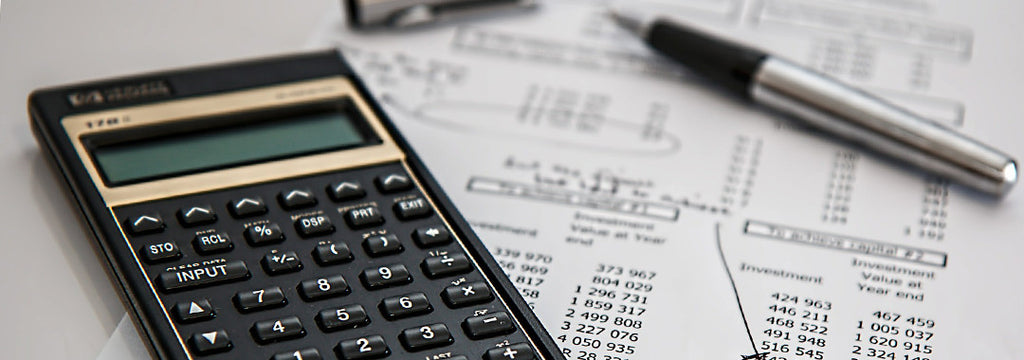
Did you know that if you are diagnosed with celiac disease, you may be able to claim tax deductions for the extra costs associated with buying gluten-free food and products? While this can be a tedious process, there’s a new app that helps ease the burden!
The Basics of the Gluten-Free Tax Write-Off
- You need an official diagnosis to be eligible: Many people are eating gluten-free for a variety of reasons, but only those with an official diagnosis of a gluten-related disorder will qualify for a tax deduction. You'll also need a prescription from your doctor recommending a gluten-free diet as your treatment option.
- Keep track of your food purchases for the entire year: In order to receive the tax deduction, you'll have to calculate the difference between the cost of gluten-free food alternatives vs. the cost of gluten-containing foods. The premise of the tax write-off is that gluten-free foods are more expensive than their counterparts, and therefore you are entitled to "write off" that portion of your expenses which are in excess of what you might spend normally. For example, if the gluten-free version of the food costs $5, and the regular version costs $3, you may write-off $2. This will need to be done throughout the entire year as you purchase gluten-free food.
- Refunds are only given if medical expenses exceed 10% of your adjusted gross income: IRS rules dictate that refunds for medical expenses will be granted only if they are over 10% of your Adjusted Gross Income (AGI). There are also no double benefits - meaning you can't claim a tax deduction for medical expenses you paid for with funds from Health Savings Accounts or Flexible Spending Arrangements. Once you have figured out if you're eligible for a tax deduction, the last step is filing your claim, which involves filling out the medical deductions form (Form 1040, Schedule A).
What is deductible? Gluten-Free food, cost of gas to travel to grocery store, shipping and handling fees when ordering online.
The catch: you need to keep detailed, accurate records. This includes grocery store receipts, internet purchase receipts, and additionally the benchmark glutenous products that you're comparing the cost to.
Other countries such as Italy offer a stipend to offset the cost of maintaining a gluten-free diet. The benefits of a stipend, aside from not having to save a years worth of receipts, is that it helps to offset the cost of living a gluten-free lifestyle, and not just the cost of products such as gluten-free breads and cookies. A lot of us don’t actually buy tons of gluten-free products, but do end up spending money on health care costs, supplements, and expensive grains such as quinoa and amaranth.
CeliTax
While this tax break is pretty phenomenal for those who qualify, it sure assumes that we have nothing but time on our hands. Who has enough hours in their day to pour over every single grocery, bakery and online receipt from the entire year in order to fill out the 1040 Schedule A form for medical deductions?
When CeliTax founder Justin Gravelle’s girlfriend Rachel was diagnosed with celiac disease, they quickly discovered that she was eligible for this tax deduction. What they found out, however, was what a headache this process would be! Applying for the tax break would include saving all receipts, itemizing them, and adding up all of Rachel’s yearly purchases in order to complete the medical tax deduction form requirements.
Gravelle decided that instead of navigating this time consuming process, he would create an app that would help Rachel and others with celiac disease easily track their gluten-free purchases.
Celitax eases the process by digitizes receipts, organizing gluten-free product purchases and calculating your tax deduction for you. To make this calculation, Celitax requires users to photograph receipts, categorize gluten-free purchases and estimate the average price of their gluten containing equivalents.
This means no shoe boxes overflowing with saved receipts and adding up each and every purchase come tax season. Celitax manages everything for you, streamlining the process while increasing organization and accuracy.
Celitax is currently available for those filing U.S. or Canadian taxes. It costs $0.99/month, with the first month free. It is currently only available for iPhones but will release an Android version soon!
Have any of you applied for the gluten-free tax write-off or used the CeliTax app? Tell us about it!



Comments
Suzanne:
You mentioned supplements in the last sentence of the section titled “the catch” – is it possible to include supplements one uses because of having celiac disease? i.e. not prescription meds but things like gluten free daily vitamins, digestive enzymes, immune strengthening products, etc.
Aug 09, 2016
sharon oneil:
i tried for about two years and then gave up , it was too much to separate normal groceries for the rest of
the family from mine
i have been celiact for 10 years and am almost 60 years old
why can’t they make a deduction that is for every ceiact
Jun 08, 2016
Leave a comment